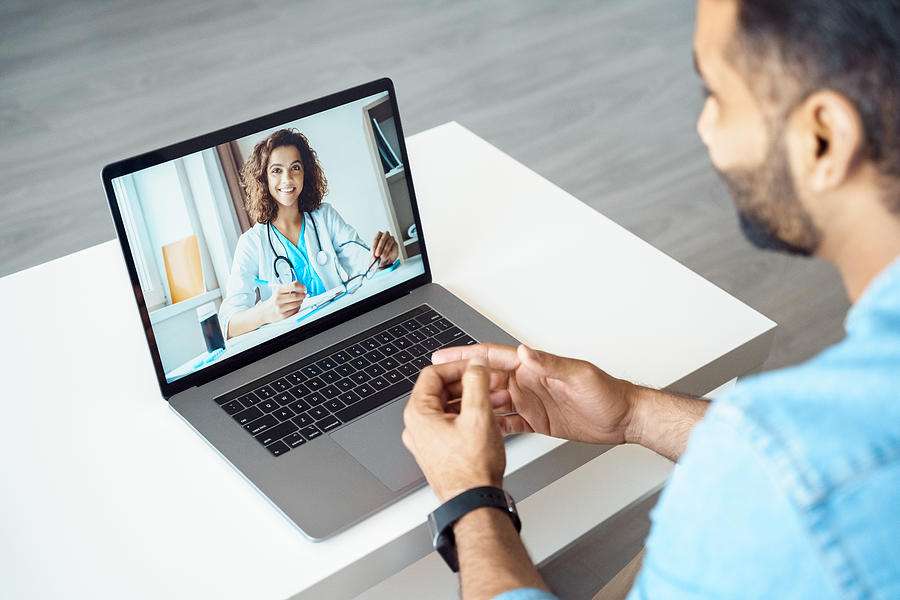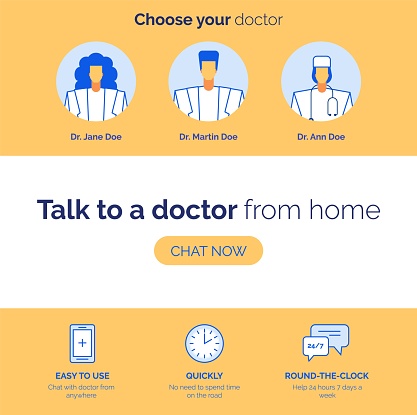We live in a world where life is becoming more and more virtual. With concepts like the metaverse on the rise, even healthcare isn’t left out of these changes. In previous eras when people had to travel miles for even a consultation, death rates from negligible causes were at an all-time high.
Now with telehealth, technology meets healthcare in a bid to deepen the reach of quality medical management and make saving lives a much easier task. In this article, we’ll explain what telehealth is all about as well as explore its benefits and limitations.
What Is The Meaning Of Telehealth?

Havard Health simply defines telehealth as “the delivery of health care services at a distance through the use of technology”.
It includes the dispensation of medical care, health education, and medical information services with remote technologies like the internet.
The Evolution of Telehealth.

From shared home remedy recipes to video conferencing, telehealth has seen great development over the last century.
In 1879, an article was published in the Lancet paper about using the telephone to reduce unnecessary office visits. And in 1925, the story of a doctor diagnosing a patient by radio also made headlines in the papers.
These little whispers of a dream would go on to lay the foundation for what would become remote care.
The 1960s and ’70s saw great advancement in virtual medicine as the Public Health Department, NASA, the Department of Defense, and the U.S. Health and Human Services Department all invested greatly into research in telemedicine and it paid off. Seeing the success, more private corporations around the world began to pay more attention to this field. Another contributing factor to its boom in evolution was the increasing popularity of the internet at that time.
Currently, over 76 percent of hospitals in the U.S. alone connect doctors and patients remotely, up from 35 percent a decade ago. There’s still a lot of unexplored ground in this field, but with medical equipment becoming more compact and portable each year, we’re definitely headed in the right direction.
Is Telehealth The Same As Telemedicine?
With these terms often interchangeably used, a startling amount of people aren’t aware of the difference between them.
Telemedicine refers to the practice of delivering medical care remotely with the help of communications technology. Simply put, it is the same thing as your doctor’s office, but now online. A doctor in a particular location is able to dispense medical care to a patient many miles away. It can either be delivered synchronously with the doctor and patient communicating in real-time, asynchronously by storing medical information to be shared later, or by remote patient monitoring.
The main distinction between the two is that telehealth is a more general term for remote medical services than telemedicine is. Telemedicine is limited to clinical services like consultations, remote diagnosis, and treatment of patients, while the other covers all types of remote healthcare services, clinical or not.
What Are Some Examples Of Telehealth?

- Live video conferencing, digital photography, and High-Resolution cameras.
This has helped physicians take a huge leap in conquering the distance barrier by providing care to patients who are not able to travel. It has been employed in treating deployed servicemen, prison inmates, and people in rural parts of the world among others.
- mHealth or Mobile health apps.
They are applications and programs patients can use on smart devices. They allow them to do things like track their health measurements, set reminders for medication or appointments, and share information with medical professionals.
- Store and forward electronic transmission.
This technology allows the collection, storage, and transmission of a patient’s health information for asynchronous dispensing of medical care. Things like CAT Scans, MRIs, X-rays, and other patient data can be compiled and sent to specialists or other members of a medical team for evaluation and assistance. This is especially common with chronic diseases.
- Remote patient monitoring (RPM).
This involves the collection, transfer, and evaluation of a patient’s wellness data like blood pressure, cardiac stats, oxygen levels, and respiratory rates through devices like wearables, mobiles, smartphone apps, and computers.
Patients and their physicians can be alerted when there are abnormal changes in vital signs.
- Health education and information services.
Informative media like this article you’re reading, published papers, and surgical records are made openly available for medical professionals and everyone else to consult. A quick search of your symptoms on the internet can easily give you a lot of information about the underlying disease
What Are The Advantages Of Telehealth for Patients?
There are a lot of pros associated with the advent of technology in medicine, some of which include:
- Convenience.
Being able to go to the doctor’s virtually is not only extremely convenient, but it also saves cost because of the ability to allow people with movement limitations to get access to good care.
- Wider reach.
Before telehealth, rural areas saw very high rates of death from preventable causes because of the lack of awareness and access to good medical treatment.
Now, death rates have been cut down by more than half. Better healthcare can now be provided to people who live in rural and undeveloped areas.
- It alleviates the problem of shortage of medical specialists.
With technology, specialists can consult for people from all parts of the world without being there in person. This has improved the ease of access to professional medical advice and treatment for many people.
- It isn’t affected by environmental factors like pandemics.
As a matter of fact, telehealth gained more prominence during the COVID-19 pandemic. While hospitals weren’t easily accessed for fear of catching or spreading the virus, technology saved the day by letting people book appointments online and receive healthcare from home.
Disadvantages of Telehealth.
Like with everything advantageous, there are also a few drawbacks to virtual care.
- Not every visit can be done remotely.
Medical procedures like imaging tests, surgeries, and emergencies require a firsthand approach.
- Concerns have been raised over the security of the health information shared or exchanged on the internet.
- Despite improving medical awareness, telehealth has also led to an increase in the rate of self-medication, due to the ready availability of medical information from different sources on the web.
- More concerns have been raised over the credibility of some informative services, doctors’ opinions, and other sources of health education available on the internet.
With so many people resorting to self-care based on their own diagnoses formed from such information, there’s a huge question about their accuracy.

Conclusion.
A publication of the Institute of Medicine of the Board on Health Care Services; Crossing the Quality Chasm, stated,
“information technology must play a central role in the redesign of the health care system if a substantial improvement in quality is to be achieved”
Telehealth is definitely an efficient means of improving and sustaining health standards around the world in the foreseeable future.
In all the places our feet can’t take us, medical technology helps us leave our footprints.
Author:
Ogboi Miracle Nwachukwu.
Reference.
“The Evolution of Telehealth: Where Have We Been and Where Are We Going? – The Role of Telehealth in an Evolving Health Care Environment – NCBI Bookshelf”. Accessed on September 2nd, 2022 from https://www.ncbi.nlm.nih.gov/books/NBK207141/
19 Responses
Amazing 💫
Nice initiative
Wow. This will help a lot
This is a very good way to ease healthcare.
Oh, Yes it is.
Amazing 👏🏾 and very understanding
Thanks
Chef’s kiss 👏🏾
Amazing, thanks
I was pretty pleased to find this great site. I want to to thank you for ones time just for this fantastic read!! I definitely really liked every little bit of it and I have you book-marked to see new stuff in your blog.
Thank you. Glad you liked it
Insightful!
Wow…I love this article.
Very explanatory & amazing
Amazing stuff 👏🏽👏🏽 Thank you for the knowledge
This write up is magnificent👏
Well done 👍
Wow, thank you for this, it was very informative.
Good work… Keep it up
An amazing writeup for an amazing initiative.
This is Epic